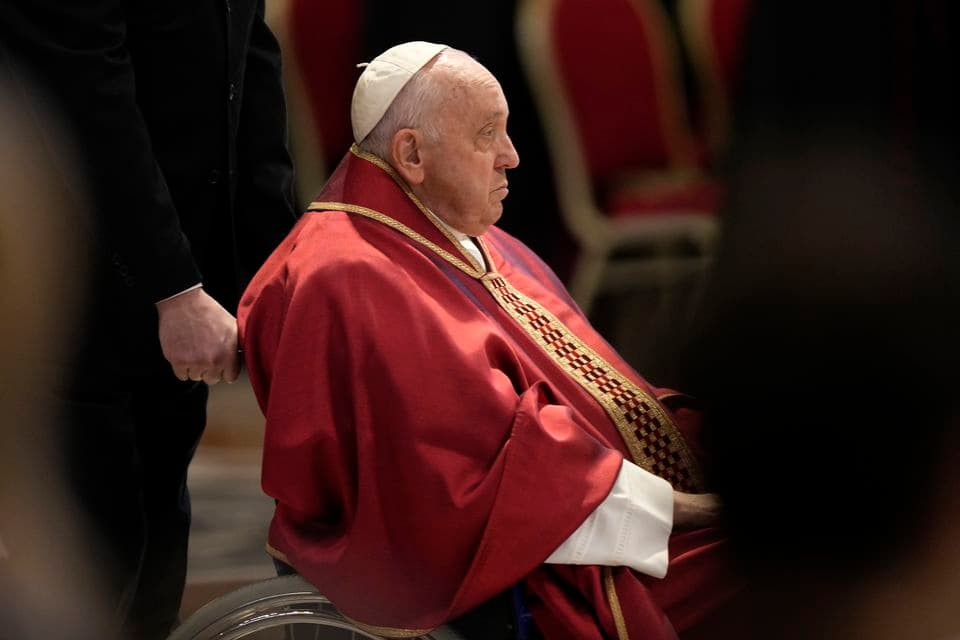There’s a big Jesuit feast day this week – no, not that one, the other one – not St. Ignatius Loyola, founder of the Society of Jesus, but St. Peter Faber, one of Ignatius’ original companions and a co-founder of the compagnia that became the Society of Jesus.
St. Peter Faber’s day is Wednesday, August 2nd, and it’s a big day for Pope Francis, who put his 16th century confrere officially in the books and on the calendar as a saint early in his pontificate.
The story of how Blessed Peter Faber came to be venerated as St. Peter Faber is one that may hold an interpretative key to the way Pope Francis thinks about power, and how he uses it to govern the Church.
What Francis did was basically to forego the formal canonization process, and instead answer three core questions: Do we know the fellow lived a life of exemplary virtue? Have the faithful been asking for his intercession fairly regularly and over a good stretch of time? Are there miracles attributed to his intercession since the time of his death?
Pope Francis answered all three questions in the affirmative and decided on his own – infallible – authority that Peter Faber should be in the books as a saint and venerated throughout the Church as such. The hifalutin’ technical term for this is “equipollent” canonization, and Francis didn’t come close to making it up. It’s been around for a very long time, as have most things in the Church, in some form or another.
Pope Benedict XVI used equipollent canonization to raise St. Hildegard of Bingen to the altars, and Francis has used it in other cases as well.
It was early in his pontificate that Francis did the thing for Peter Faber. Francis, visibly antsy in his new Roman digs and flush with the success of his first World Youth Day in Rio de Janeiro, was still wowing the world with his mold-breaking gestures and spontaneous acts of almost whimsical gospel witness. The “Francis effect” was in full swing, but his off-the-cuff remarks and frequent, spectacular departures from protocol were discomfiting to some folks of a more conventional disposition and positively chafed the hidebound.
“This pope just doesn’t understand the office he has, or its power,” several people said to me – roughly – à propos of various papal surprises over those first months. Others wondered out loud, on social media, and some occasionally in published commentary. That reading always struck me as, well, wrong.
You see, Pope Francis put St. Peter Faber in the books on December 17th of 2013, his own 77th birthday, making his act – whatever else it was – a “birthday present to himself,” as I once quipped. To me, that only showed exactly how well Francis really does understand the office and its power. Agree with him or disagree over how he uses power in general or in any particular case, like it or not, but don’t say he doesn’t get it.
St. Peter Faber, by the way, is a fascinating character in his own right, whose life and legacy likewise hold a key to understanding Pope Francis’s approach to governing the Church.
He was the first great master of the Spiritual Exercises of St. Ignatius, and a powerful preacher who had great success especially in Germany, where the pope had sent him to defend Catholic doctrine against Lutherans and help restore religious unity in the Holy Roman Empire though formal debate. Instead, Faber eschewed theological disputation and preferred to preach radical personal reform and spiritual renewal through rigorous self-examination.
When the cardinals elected Francis, they gave him a mandate to reform the Church’s central government. The new pope had a different take on the job.
As early as 2014 – certainly no later than the end of that year – Pope Francis used the traditional Christmastide gathering with senior Vatican officials to list the ills that plague the pope’s governing apparatus and more precisely the men who hold office in it. Francis, like Peter Faber, was putting spiritual reform ahead of institutional reform.
You’d be hard-pressed to find someone willing to say that spiritual reform is other than essential to the life of a Christian. Five minutes on the Vatican beat will suffice to convince even the most moon-eyed naïf that high curial officials need it as much as the next guy.
Even so, the Roman curia is a bureaucracy. Even if living saints staffed and led every curial department, it would still be a bureaucracy. As I’ve said elsewhere, reforming a bureaucracy is one thing. Reforming bureaucrats is quite another.















